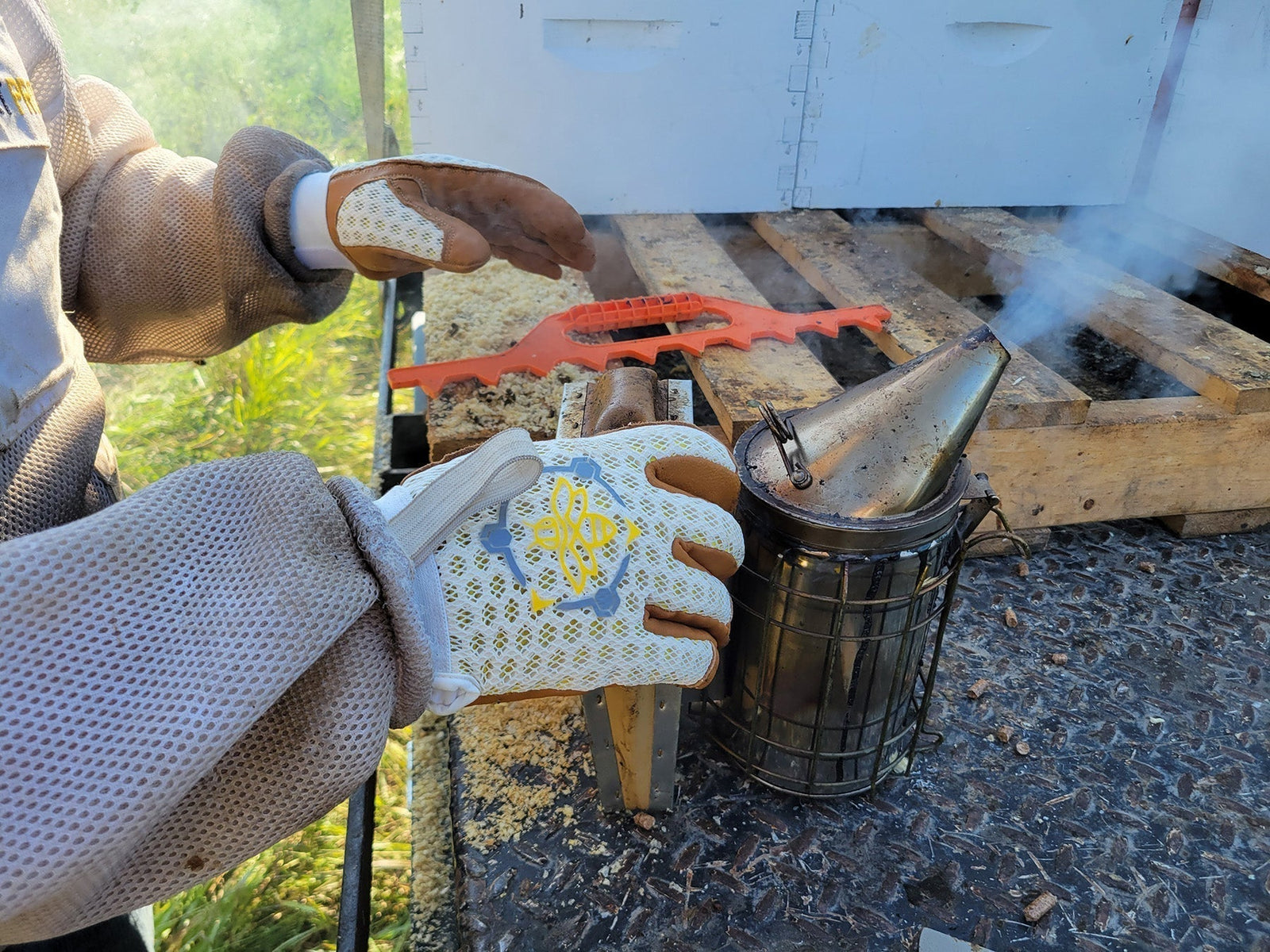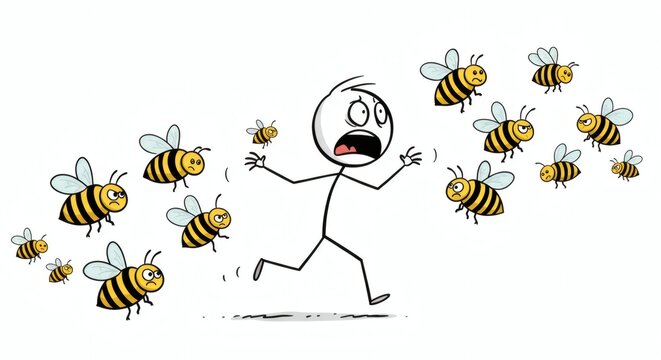I must admit that I’m still a bit surprised at the number of references to beekeeping gear being “Sting Proof” out there in the marketplace. Terms like “Sting-Stopper,” “Anti-Sting,” “Prevent Stings,” and “Sting Protection,” are just versions of the claim that a particular product will stop or prevent bees from stinging you while you are doing beekeeping activities. Any online search for beekeeping gear, especially beekeeping suits, jackets, gloves, veils, and hoods, …will produce a large number of products that use these terms.
As any true beekeeper who’s been beekeeping for more than 5 minutes knows, if you keep bees, you will get stung. With all of these “Sting-Proof” products out there, how is this possible?
Without going into too much detail, let’s consider one of the bees’ amazing features, …its stinger! In laymen’s’ terms, a bee’s stinger is tough, flexible, tiny, and only needs to basically touch your skin to produce a sting. Once the stinger grabs onto your skin, it can work its way deeper in a short amount of time while injecting venom. Bees can sting through any woven material (yes, even Kevlar), most leathers, and most synthetics.
The only lightweight things bees cannot sting through are solid materials such as hard plastics, and reasonably thick materials such as rubber or silicone. The problem with making protective garments such as beekeeping suits/jackets or gloves from these materials is that they would make it difficult to move if made completely from solid materials and bees would just sting through any gaps if you left any spaces. Plus, solid materials don’t breathe and would be terribly uncomfortable. Look up “Asian Hornet Protective Suit” and you will see some examples of what a nearly sting-proof suit would look like.

In the honeybee (apis meliflora) world, however, we are looking for a compromise that results in a highly reduced likelihood of being stung while maintaining a degree of comfort and the ability to carry out our beekeeping tasks. Fortunately, there is a way to do this!
While bees can sting through most any comfortable, practical material, they can only sting through 3 to 4mm of distance. So, the key is to maintain a minimum of 4mm distance between the bee’s fuzzy little behind and your skin! Interestingly, most beekeeping suits, jackets, and gloves are made from materials that are less than 4mm thick. Most of them are less than 2mm thick. So how do they prevent stings?
The answer is that they are loose-fitting. The space of the materials plus the air space from a loose fit helps to keep enough distance in most places (but not all). Depending on whether or not your bee suit is touching your skin in the area that a bee is trying to sting through it, will determine whether or not the bee is successful. Here is a diagram of a bee stinging through a typical 3-layer ventilated mesh beekeeping suit.

As you can see, the most anyone can say about the protective materials currently on the market is that they “resist” or maybe “reduce” bee stings. They certainly don’t “prevent” stings and they are definitely NOT “Sting-Proof!” If you wear these items loosely and keep moving, you won’t get stung through them very often, …and that’s what makes beekeeping possible and even enjoyable for the most part.
While our suits and jackets are of a similar thickness to other high-quality beekeeping suits and jackets out there, ...what we’ve done with the back of our Apis Tactical™ Beekeeping gloves is created a unique combination of materials that are stretchy, breathable, and that maintain 5mm of distance under most circumstances. That’s real “Sting Protection” if you ask me.
Here’s that same diagram again, but with our 5mm thick materials:

So remember, it’s the space, the distance between the bee and your skin that makes something “sting-proof.” Keeping that in mind when selecting your beekeeping gear will help you choose and wear it properly to reduce the number of times you will get stung.
Further, …don’t forget that there are other factors to keep in mind for safety while working with bees. I’ll cover more of those in a later blog post perhaps, but remember, your beekeeping suits can’t protect you if you forget to zip it up, or if you tear it. Always proceed cautiously and think about what you are doing. It’s also best to not work with bees alone, …accidents can and do happen. Take your time, listen to your bees, and choose your gear wisely.





